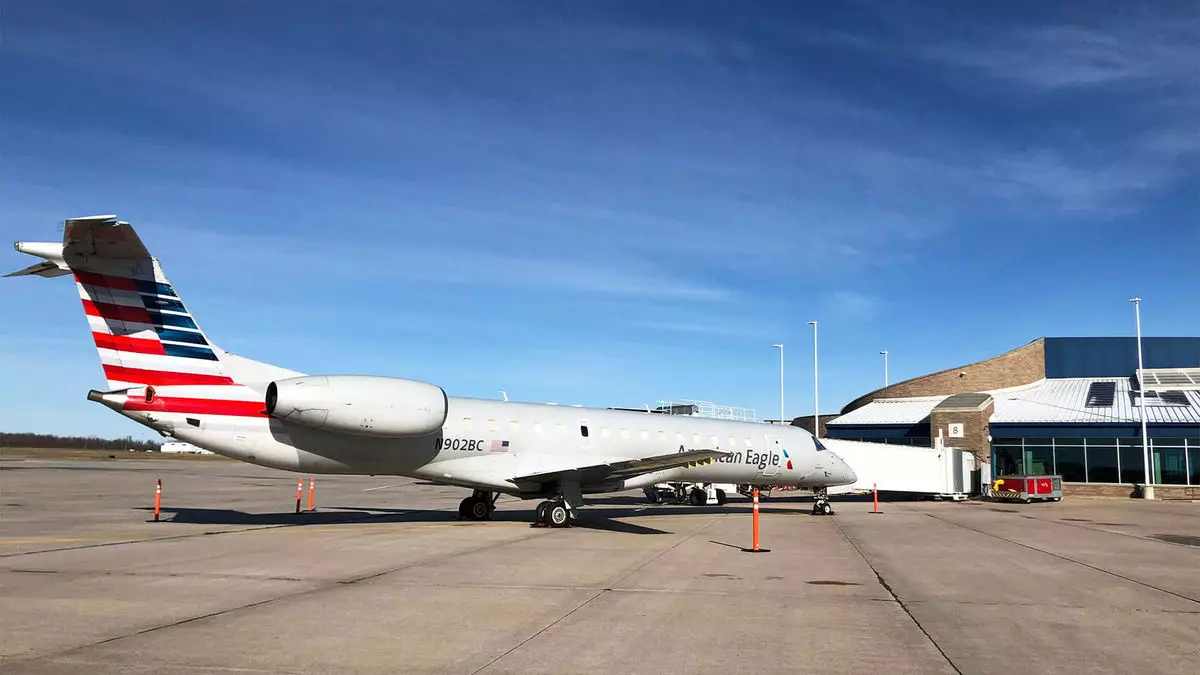In the wake of the COVID-19 pandemic, small airports across the United States faced significant challenges, grappling with a dramatic decline in air travel. Appleton Airport, situated in northeast Wisconsin, was no exception. The aviation industry, already under strain, was further impacted by an acute shortage of pilots, forcing major airlines such as American Airlines, Delta, and United to curtail their regional services. However, a recent uptick in operations suggests a promising revival. As of June, Appleton Airport is welcoming new opportunities with American Airlines launching its first-ever direct service to Dallas-Fort Worth. This marks a significant milestone, as the daily flight joins other recomposed routes, including service to Charlotte.
The reinstatement and introduction of these routes reflect wider trends in the aviation landscape. Although Appleton experienced a steep 31% decline in major airline operations between late 2021 and 2023, recovery metrics have been encouraging. Current data reveals that Appleton has rebounded to approximately 92% of its flight count from October 2021, and even surpassed pre-pandemic seat capacity by nearly 6%. This revival is not merely statistical; it denotes improved connectivity for the greater Appleton metropolitan area, home to about 250,000 residents. Jesse Funk, the airport’s air service and business development manager, underscores the tangible benefits for both business and leisure travelers, enhancing their opportunities for timely and convenient travel. Funk claims that increased competition among airlines is pivotal, not just for pricing but for elevating the overall service quality.
Despite Appleton’s success story, it is essential to consider the larger context within which this resurgence is occurring. The airline industry is undergoing significant changes, particularly concerning pilot staffing. Following an unprecedented hiring spree by mainline carriers to address shortages created during the pandemic, regional airlines are slowly regaining stability. American Airlines has reported an increase of 14.9% in regional aircraft flights compared to the previous year. Delta and United are also rebuilding their operations, showcasing a notable recovery with increases of 9.8% and 13.9%, respectively. According to Delta’s president Glen Hauenstein, the pilot capacity constraints that plagued regional flight operations are dissipating rapidly, suggesting forthcoming growth.
Moreover, airlines are strategically reinvesting in regional fleets to boost operations. With Delta indicating plans to restore full utilization of its regional fleet by next summer, expectations for operational reliability are on the rise. Similarly, United Airlines is expanding its regional offerings through additional agreements with operators like SkyWest. American Airlines is also planning significant fleet expansions, introducing new, larger aircraft to its regional lineup. With these operational enhancements projected, a clearer picture emerges of an industry that is gradually rebuilding.
However, it is essential to approach this optimism with caution. Regional airline operations remain significantly below pre-pandemic levels, and overarching trends suggest that large carriers may favor high-capacity mainline aircraft over smaller regional jets. Despite recent growth in medium-sized communities, the Regional Airline Association offers a sober reminder that smaller airports are still losing service—predominantly those that cater to a negligible fraction of air traffic. According to CEO Faye Malarkey Black, about 65% of U.S. airports have seen diminished services compared to 2019 levels, highlighting a worrying trend.
Additionally, as airlines ramp up their capacity once again, they may encounter challenges akin to those faced during the pilot shortage. The complexities surrounding workforce management and operational efficiency could lead to instability. In an industry marked by rapid changes, the implications of such factors could contradict the progress achieved thus far.
The journey of Appleton Airport serves as both a beacon of hope and a cautionary tale within a broader narrative. The increased services reflect a recovery, catering to the needs of local travelers while providing a boost to the regional economy. Yet the future still holds uncertainties, as the aviation sector grapples with structural challenges and evolving market demands. Despite the hurdles ahead, Appleton Airport remains committed to continuous improvement. Their outlook is not one of complacency but one of enthusiasm for further growth. As Funk aptly summarises, while recent developments are encouraging, there remains the aspiration for even greater connectivity and service expansion. Only time will tell how fully Appleton—and countless similar airports—will reclaim their footing in a post-pandemic world.


Leave a Reply